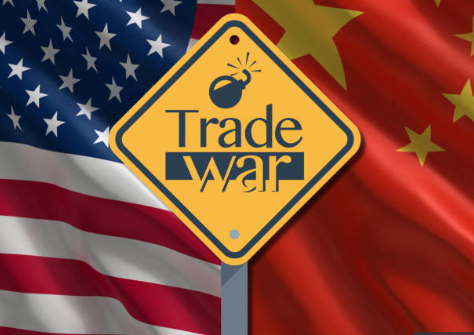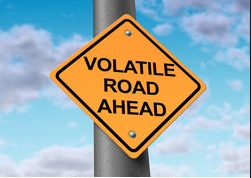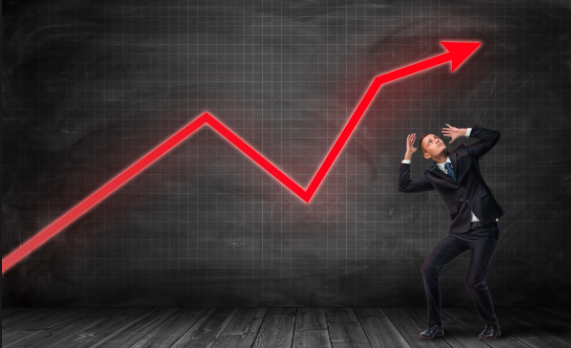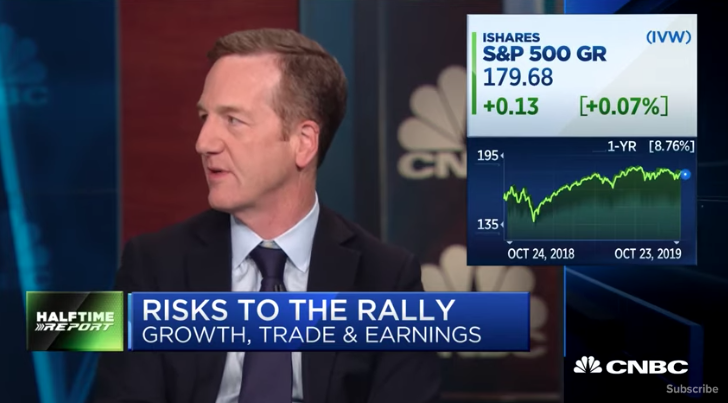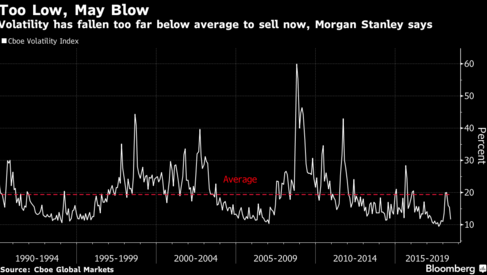If it’s not inflationary and rising rate concerns there is now the threat of retaliatory fears from the latest news centering on the U.S. potential trade tariffs on steel and aluminum. Even as inflation ticked up, as measured by the PCE data released yesterday, the U.S. 10yr. Treasury took a leg lower. Fed Chair Jerome Powell gave his second testimony before a Senate Banking Committee yesterday. He said there were currently no “decisive” signs of wage inflation, just days after he stated that the central bank could raise interest rates three or more times during 2018 to prevent the U.S. economy from overheating. But by midday yesterday, headlines were centered on the President’s comments on implementing tariffs on steel and aluminum.
Trump has said he will sign orders next week imposing a 25% tariff on steel imports and a 10% tariff on aluminum. “You’ll have protection for a long time,” Trump told steel industry executives. Trump’s move begs of revisiting President Bush’s failed attempt to levy tariffs back in 2002.
President Trump’s announcement that he was set to impose tariffs on aluminum and steel imports sent stocks into a tailspin, with the Dow ending the day down 420.22 points, or 1.7%, while the S&P 500 plunged 1.3%. Implied volatility or the VIX spiked Thursday afternoon, ending the day roughly13% higher at 22.47. The VIX is higher this morning by another 6% with U.S. equity futures showing a continuation of selling this morning.
The U.S. imports four times more steel than it exports and is reliant on steel from more than 100 nations. Domestic steel prices were already up 20% since the beginning of the year in anticipation of possible tariffs, said Andrew Hunter, U.S. economist at Capital Economics, in a note. That’s a big potential drag on steel consumers in the machinery, motor vehicle and construction industries, he said, observing that the tariffs could, ironically, raise the incentive for those manufactures to move production offshore to avoid the tariffs.
Moreover, President Trump’s top-level economic advisor, Gary Cohn, is fiercely against the proposed tariffs. The decision to announce such measures may cause irreparable damage in the relationship and find Gary Cohn on the outs, something the markets would not likely take favorably.
A trade war is looming large, heightening investor fears. On Friday morning, Canada, the European Union, Mexico, China and Brazil already announced they were considering countermeasures, according to media reports. European Commission President Jean-Claude Juncker said he would take the matter to the World Trade Organization.
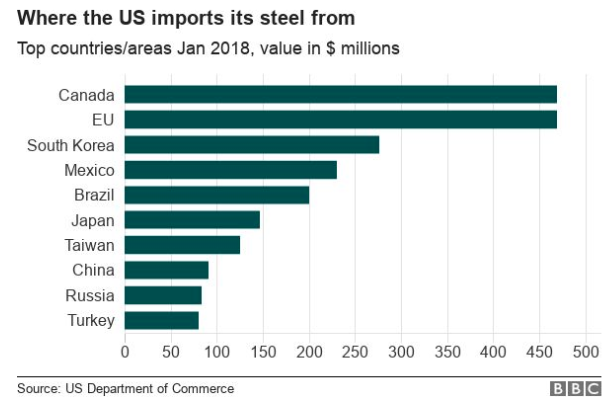
Canada is the largest U.S. importer of steel. Canadian trade minister Francois-Philippe Champagne said any tariffs would be “unacceptable”. Minister of Foreign Affairs Chrystia Freeland said Canada would take “responsive measures” if restrictions were imposed but did not give details. Although China is not a large U.S. importer of steel and aluminum, the Asian nation carries with it a heavy sword in all trade matters around the globe. Chinese foreign ministry spokeswoman Hua Chunying said: “If all countries follow the example of the United States, this will undoubtedly result in a serious impact on the international trade order”, according to AFP news agency.
The bottom line with regards to the potential of steel and aluminum tariffs is not just along the lines of a trade war, but a nullification of the recently passed tax reform package. Steel and aluminum tariffs carry with them the potential of price inflation that would hit all levels and categories of industry.
“It’s the worst possible nightmare for the economy,” said Economic Outlook Group chief economist Bernard Baumohl, with perhaps a touch of hyperbole. More expensive steel in the U.S raises costs for companies making cars, homes, office buildings and more — and could push inflation up above 3% by 2019 or 2020, he argues. “More workers in the U.S. make products that are made from steel, than make steel itself.”
March is not finding equities marching higher at the moment and the first trading day of what is usually a strong month for equities is now in danger of finding the S&P 500 possibly testing recent lows. Technical damage is being done with the S&P 500 breaching the 2,700 level yesterday.
Mark Luschini, chief market strategist at Janney Montgomery, said he has been expecting more selling and a retest of the February lows is possible. The tariff news adds to his expectation the market will sell off further. “Whether we need to go to 2,530 remains to be seen,” he said.
Markets will remain focused on the fallout from the news centering on trade tariffs and investors will likely be de-risking to some degree. It’s a light day from an economic data standpoint. Consumer sentiment is due out at 10 a.m. ET. Earnings are due out from JD.com, Foot Locker and JC Penney, which are all scheduled to report before the opening bell.
Tags: JCP SPX VIX SPY DJIA IWM QQQ

